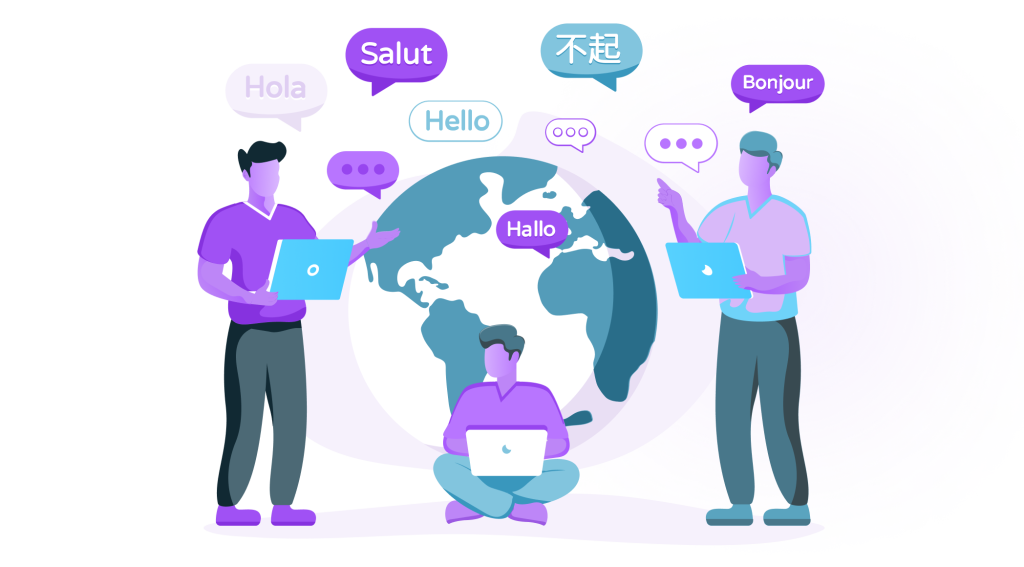As Marketing Manager, I’ve seen firsthand the transformative power of multilingual customer support in boosting e-commerce success. In today’s globalized marketplace, ignoring the linguistic needs of your customers is a significant missed opportunity. Failing to offer support in their native language can lead to lost sales, decreased customer satisfaction, and a damaged brand reputation. That’s why implementing a robust multilingual customer support strategy is no longer a luxury—it’s a necessity.
How does Multilingual Support Enhance Customer Experience on E-commerce Platforms

Here are seven key strategies I recommend for achieving multilingual e-commerce success:
1. Identify Your Target Markets and Their Languages
Before diving into implementation, thorough market research is crucial. Analyze your website analytics to pinpoint your most active international customer segments. Which countries are generating the most traffic and sales? Which languages are predominantly being used? Don’t rely on assumptions; let data guide your language selection. Prioritizing languages based on concrete data ensures your resources are allocated effectively. For example, if you’re seeing a surge in traffic from Brazil, Portuguese support should be a top priority.
2. Leverage Technology for Efficient Translation and Support
Manual translation is time-consuming and prone to errors. Invest in professional translation services or translation management systems (TMS) that ensure accuracy and consistency across all your communication channels. Machine translation can be a helpful tool for initial drafts, but always have a native speaker review and edit the final product. Consider using a live chat system with multilingual support capabilities, enabling real-time interaction with customers in their preferred language. This immediate responsiveness is key to building trust and resolving issues quickly.
3. Train Your Customer Support Team
Effective multilingual customer support relies heavily on your team’s capabilities. Invest in training programs that equip your agents with the necessary language skills and cultural understanding. Cultural sensitivity is just as important as linguistic proficiency. A simple phrase might have different meanings in different cultures, leading to misinterpretations and misunderstandings. Regular training sessions and cultural awareness workshops ensure your team can provide empathetic and effective support. Consider using role-playing exercises to simulate real-world customer interactions.

4. Localize Your Self-Service Resources
Don’t rely solely on live agents. Proactively create comprehensive self-service resources, such as FAQs, troubleshooting guides, and product manuals, in multiple languages. This allows customers to find answers quickly and independently, reducing the burden on your support team. Make sure these resources are easily accessible and well-organized, utilizing clear and concise language. This approach not only enhances customer satisfaction but also frees up your agents to handle more complex issues.
5. Choose the Right Communication Channels
The communication channels you utilize should align with your target market’s preferences. While email remains a staple, consider integrating live chat, social media support, and even phone support in relevant languages. Understanding your customer’s preferred communication methods is critical. A younger demographic might prefer live chat, while an older generation may prefer phone calls. Offering a variety of options ensures accessibility for all customers, regardless of their age or technological proficiency.
6. Monitor and Analyze Performance
Regularly monitor key performance indicators (KPIs) to assess the effectiveness of your multilingual customer support strategy. Track metrics such as customer satisfaction scores (CSAT), resolution times, and customer effort scores (CES) in each language. This data provides invaluable insights into areas for improvement. Analyzing these metrics allows you to identify potential bottlenecks and refine your processes for optimal efficiency. For example, if resolution times are significantly higher in a specific language, it might indicate a need for further agent training or additional resources.
7. Keeping Improving and Adapting
The global landscape is constantly evolving, as are customer expectations. Regularly review and update your multilingual customer support strategy based on performance data, customer feedback, and market trends. Be flexible and willing to adapt your approach as needed. This iterative process ensures your strategy remains relevant and effective in meeting the diverse needs of your international customer base. Regularly solicit customer feedback through surveys and feedback forms to identify areas for improvement and ensure your efforts align with their expectations.

By implementing these seven strategies, you can build a multilingual customer support system that not only enhances the customer experience but also drives significant e-commerce growth. Remember, providing excellent customer service in your customers’ native language is an investment that yields substantial returns in terms of customer loyalty, brand reputation, and ultimately, your bottom line. In my experience, this approach transforms a potentially frustrating experience into a positive interaction, fostering lasting relationships with customers worldwide.




